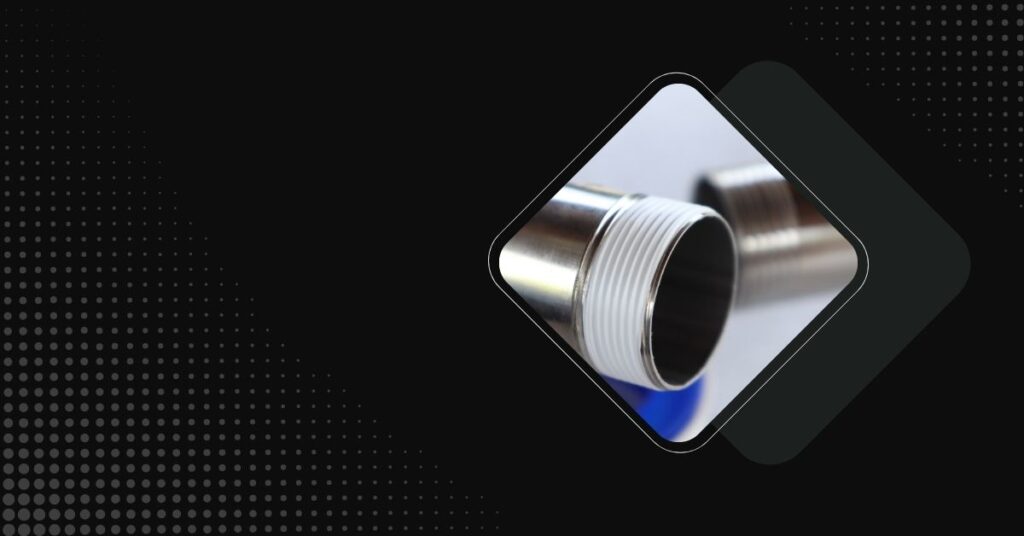Search and find products in our Catalogue
Enter the product name, part number or cross-reference below...

Patch Locking Technologies
In the world of fasteners, we talk a lot about strength, durability, and precision. But what happens after the fastener is installed? How do we ensure it stays put, even under extreme vibration, temperature fluctuations, or heavy loads? The answer often lies in patch locking mechanisms. In your personal life, you may have used a dab of threadlocker to keep a screw in place, in these more engineered solutions we’ll dive into we’ll talk about long-term security for critical applications. We’ll be reviewing three of the most common and effective patch locking technologies.
Chemical Bonds
When you think “threadlocker,” you’re likely picturing a liquid chemical applied during assembly. For many pre-applied patch solutions, they use a micro-encapsulated chemical adhesives. These tiny capsules, pre-applied to the fastener threads, contain an adhesive. When the fastener is engaged, the pressure of mating threads crushes these capsules which releasing the liquid adhesive. This adhesive then cures and forms a strong bond between the fastener and the mating material.
Chemical patch locking provides excellent resistance to loosening from vibration and shock through high breakaway and prevailing torque. Pre-applied patches ensure consistent and precise amounts which eliminates manual application errors. This process is also generally cleaner with no messy liquids on the assembly line. This versatile solution is effective on a wide range of materials and performs well across a large temperature range.
Ideal applications for chemical patch locking include automotive, electronics, industrial machinery, and any application where secure, permanent fastening is crucial.
Nylon Patches
Sometimes, you need a locking mechanism that offers reusability and controlled prevailing torque without a permanent chemical bond. That’s where nylon patch technologies come into play. A nylon patch (often Nylon 6/6) is a thermoplastic that is permanently fused to a portion of the fastener’s threads. When the fastener is driven into a mating thread, the nylon material is compressed, creating a strong frictional interference fit. This patch provides resistance to vibration and prevents loosening.
Nylon patches maintain their locking ability for multiple installations and removals. The nylon material is softer than the base metal which prevents damage to mating threads and acts as a sealant. This prevents leakage in certain applications. This technology also offers good performance over a wide range of temperatures.
Nylon patches are ideal for any application requiring reusability, such as adjustable assemblies, inspection covers, or where vibration is a concern but disassembly is anticipated.
Sealing Patches
While other types of locking mechanisms offer some sealing properties, dedicated sealing patches are designed specifically to prevent the flow of liquids and gases. These patches often combine a locking function with a sealing capability. Sealing patches use flexible materials, like rubber or special sealants, that get squeezed to fill the screw’s threads and the part it’s going into.
Sealing patches create a watertight or airtight seal which prevents against corrosion within the joints since moisture can’t get in. Other areas this can be useful is safeguarding against dust, direct, or other contaminants. These patches are ideal for fluid power systems, marine applications, outdoor electrical enclosures, fuel systems, and any application where environmental sealing is paramount.
Choosing the Right Patch for Your Application
The selection of the optimal patch locking mechanism depends heavily on your specific application requirements. Factors to consider include vibration levels, temperature range, reusability needs, environmental exposure, and assembly process. Different patches are more readily available and most cost-effective.
At Knapp Fasteners, we understand the critical role these patch locking mechanisms play in the performance and longevity of your assemblies. We can source a large range of fasteners with pre-applied patch solutions. Our sales team is ready to help you find what you need! Contact us today.